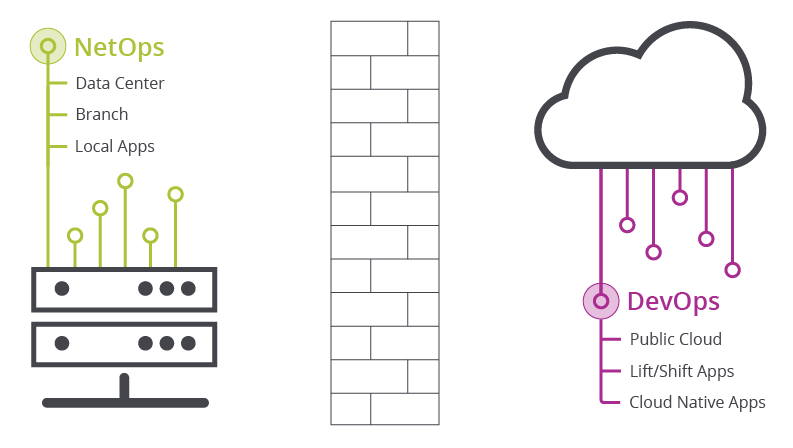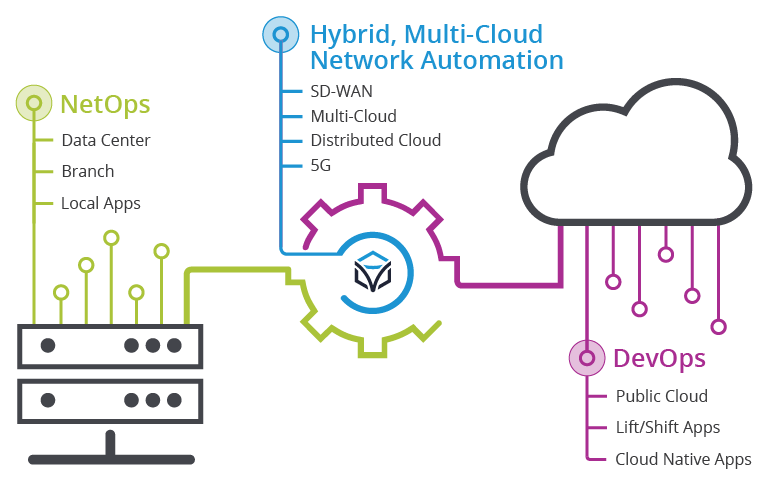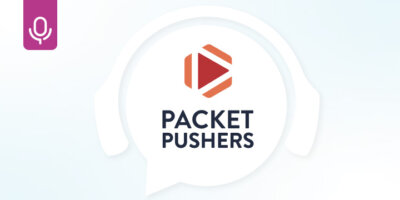The network and the cloud continue to converge with the evolution of a modern ecosystem, bringing the worlds of NetOps and DevOps together. Part of this is the fact that the public cloud has matured, too. The first years were a rapid land grab during which CIOs were pitched AWS as a destination for all of their workloads. Today, the cloud landscape looks more like a set of commodity products (IaaS, DB, ADC), with a growing set of differentiated services and offerings (AI/ML, GKE, Big Data), as well as SaaS vendors providing specific applications and network services (Zscaler, ServiceNow, Salesforce, Cato). The connectivity associated with these cloud services coupled with key enterprise applications is creating a priority market for providing a connected ecosystem across hybrid infrastructure to efficiently and securely offer these transformational services.
The networking community has had an interesting response to this market evolution. Vendors that cater to the NetOps side (Cisco, Juniper, SilverPeak) have put the Branch as the center of this transformation, taking a ‘Branch-Out’ approach with SD-WAN offers. Vendors who cater to DevOps teams have obviously had a ‘Cloud-Out’ approach (e.g., Aviatrix, Alkira). Public cloud vendors who originally tried to build a walled garden did not succeed, and now understand the need to provide uniform, multi-cloud interfaces (e.g., AWS Transit Gateway, Azure Virtual WAN). One thing is clear – the juncture between infrastructure that have traditionally belonged to either NetOps or DevOps alone is the battleground for network innovation, and CIOs need to build a cohesive strategy that unifies the two approaches for reliable success.
Historically, CIOs created two distinct groups within their organizations:
- NetOps Team – This group focused on traditional route/switch Data Center technologies coupled with Branch and Campus responsibilities. Local application responsibilities would include Load Balancers, Firewall, & DDI (DNS, IPAM).
- DevOps Team – This group focused on AWS and Azure with a responsibility to applications which have been migrated to the cloud primarily as part of a digital transformation. They viewed application developers as their customers and provided cloud infrastructure starting with a lift/shift mentality and moving towards a cloud-native target state.
In the past, treating the two as distinct, siloed groups made a lot of sense, as the skillsets and requirements for these two teams have historically been very different. However, evolution on both the NetOps and DevOps sides to a market that offers a highly distributed set of services has created a need to either merge these teams together, or to provide a common platform to facilitate integration and automation needs both teams face.
Break Down Barriers to Adopt a NetDevOps Approach
The introduction of SD-WAN and Multi-Cloud marks the first set of services which require the CIO to transform their operations. The reality is that digitally transformed businesses will rely on a large set of cloud and SaaS services, which will require a robust strategy for connectivity and security. The traditional two silos for networking and cloud, NetOps and DevOps, will no longer be a valid operational model – a NetDevOps approach is required to bring together the principles and practices from both sides and operate seamlessly across both cloud and on-premises infrastructure.
While Lines of Business don’t work for the CIO, they are taking a stronger role in application development and are often the primary end users of networking infrastructure. The question is how to provide these users with self-serve Network-as-a-Service capabilities that allow them the flexibility to move at the speed their digital transformation efforts require. Governance and best practices will be the preferred model for engaging the application teams in the management of infrastructure and networking services.
Forward with NetDevOps: How Automation Platforms Like Itential Can Remove Barriers
As businesses continue to expand across hybrid and multi-cloud infrastructure, burgeoning NetDevOps teams must know how to provision and configure networking across not only disparate on-premises physical network infrastructure, but also across these various public cloud network environments.
Without a third-party solution, there is a specialized skillset and a steep learning curve required for connecting multiple types of devices to multiple cloud environments that is not satisfied by manual provisioning alone. This complex challenge causes network management, application performance and compliance issues. Hybrid and multi-cloud management highlights the need to adopt cloud constructs and drives network automation by providing a programmable network — otherwise, companies risk falling short of the NetDevOps goal.
Using the tools the modern networking technology ecosystem provides, teams can apply DevOps concepts like CI/CD and build-test-run to networking assets, and provide network automations as services through a self-service platform for their organization. Itential is the leading platform for NetDevOps teams and provides the best foundation for teams to implement the cloud-first shift and succeed as networking continues to evolve.
Article originally published on ONUG.net.
Tags: Cloud Networking NetDevOps







